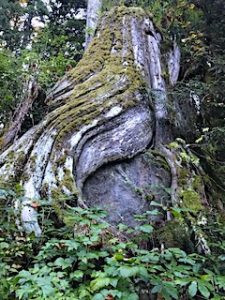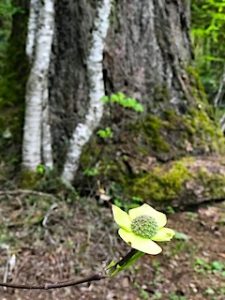 The Columbia City Yoga on-line Moving into Meditation class met this morning. We explored mindfulness as “heartfulness.” We cultivated embodied presence and invited the heart wisdom to reveal itself.
The Columbia City Yoga on-line Moving into Meditation class met this morning. We explored mindfulness as “heartfulness.” We cultivated embodied presence and invited the heart wisdom to reveal itself.
We continued to draw from Oren Jay Sofer’s new book: Your Heart Was Made for This: Contemplative Practices for Meeting a World in Crisis with Courage, Integrity, and Love. We are explored the quality of mindfulness.
We drew on the work of John Prendergast. John has been a spiritual teacher and psychotherapist. We drew from his book, The Deep Heart: Our Portal to Presence. “The ‘deep heart’ is John’s term for the subtle center of emotional and energetic sensitivity, relational intimacy, profound inner knowing, and wholeness found within our hearts.”
We heard Rosemerry Trommer Wahtola’s poem, How. Rosemerry generously offers a daily poem through her site: A Hundred Falling Veils.
Welcome. Last week we worked with the living question: “What is it that wants to be born?” I believe our hearts hold the answer. Mindfulness practice can create the conditions in which we can feel and hear our heart’s wisdom. We can recognize what we truly value by who and what we give our attention to. Oren Jay Sofer writes:
Mindfulness illuminates our inner life. The more it grows, the more aware we become in all aspects of life, creating a new healthier habit of being wakeful moment to moment. Mindfulness works . . with other skillful qualities like concentration and equanimity, thereby opening the door to human flourishing and . . freeing our hearts and minds from reactivity and delusion.
We can pause for a moment to consider the relationship we hold with our inner life. Do we tend it like a garden? We can reflect on our experience of mindfulness. What does it mean to be free of reactivity and delusion? How are we awake to our lives? What do our feelings, thoughts, words and actions say about this precious experience of living? I think living the questions is where we’ll find answers. Any answer will always be changing. It will be arising out of the conditions from which we experience ourselves and the world. The very nature of our being animals creates the strongest impulses to be safe, to survive. These impulses arise out of very deep conditioning. This awakens compassion in me – for myself, a human animal, and for others, we are social animals. These awarenesses take me back to the heart, the wise heart.
The teacher, therapist and author John Prendergast writes:
 The heart area is where we feel most intimately touched by kindness, gratitude, and appreciation. It is where we feel most loving and loved. It is where we point when we refer to ourselves and where we feel the full poignancy of our human existence . . It is where and how we know ourselves and others most intimately. It is where we simply are, free of any definition. . . it is where we move from when we are most at ease and in touch with ourselves. When the heart has awakened we are intimate with all things.
The heart area is where we feel most intimately touched by kindness, gratitude, and appreciation. It is where we feel most loving and loved. It is where we point when we refer to ourselves and where we feel the full poignancy of our human existence . . It is where and how we know ourselves and others most intimately. It is where we simply are, free of any definition. . . it is where we move from when we are most at ease and in touch with ourselves. When the heart has awakened we are intimate with all things.
What if we thought of mindfulness as heartfulness? So often even the term, “mind,” connotes thinking or problem solving. What would our experience be like if there wasn’t a problem to be solved? What if we could relax the vigilance always working to keep us safe? What if we could meet our inner life and our outer life with tenderness and vulnerability?
The poet Rosemerry Trommer Wahtola’s poem, How, offers us some encouragement:
How
If the drink is bitter, turn yourself to wine.
—Rainer Maria Rilke, from “Sonnets to Orpheus 2, 29,” trans. Joanna Macy and Anita Barrows
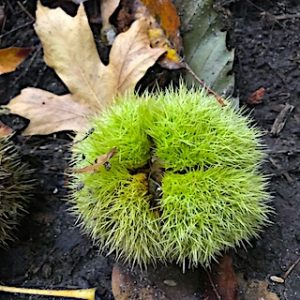 When so much is bitter,
When so much is bitter,
it is hard to believe in patience,
hard to trust transformation,
the goodness of time.
How to turn the self
into something it’s not?
The ripest, sweetest grapes
make the strongest wine.
Whatever is sweetest in me
is not me—
is whatever shines through me.
That. I am learning to trust
the sweetness, the ripening
of that.
Mindfulness practice, heartfulness practice calls us to “believe in patience,” to “trust transformation, the goodness of time.” Perhaps, we too, can learn to trust “whatever shines through . . . the sweetness, the ripening of that.”
Let’s explore how we might trust “whatever shines through.” I invite you to adjust your posture as you need. You might take a few stretches and relax whatever you can. You might look about your surroundings and recognize that you are safe. You are in good company. Take a few deep, slow breaths perhaps letting out a sigh. Let go of whatever you can. Find a place to rest awareness. Experience how the breath and the body begin to settle. Feel how your body can rest with the silent Earth beneath you. Can you entrust yourself to the goodness of time? Can you entrust yourself to feeling being?
 You might sense over the delicate muscles of your face, around the brow and eyes. Can the eyes relax? Sense around the temples and cheeks. Can the jaw relax? Moving over the lips and tongue. Can the nose and throat be relaxed? What is like to feel embodied and present in these areas?
You might sense over the delicate muscles of your face, around the brow and eyes. Can the eyes relax? Sense around the temples and cheeks. Can the jaw relax? Moving over the lips and tongue. Can the nose and throat be relaxed? What is like to feel embodied and present in these areas?
You might sense along the inner and outer surfaces of you neck and upper back. Can the shoulders relax? Sense down the length of your upper and lower arms down into your hands. Can you feel the energetic aliveness in these areas?
Moving down the length of your spine. Can you feel a sense of support at your center? And the circumference of your torso. Sense the expansion and relaxation of the lungs. Can the belly be soft?
Feel how the pelvic bones are meeting Earth. Can you feel grounded? Can you relax as these bones hold soft inner organs?
Moving awareness into the deep pockets of hip joints and along thighs, lower legs and feet. Can you feel the aliveness, the stored energy in these areas?
Can you be available to what arises in embodied presence? Can you be available to the goodness of time?
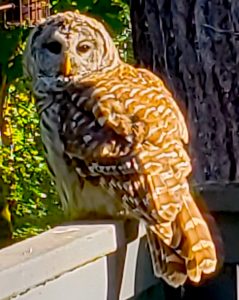 This is not about trying to be in our idea of the present or about making our minds be still. It’s more about making oneself available. Available to whatever arises. Associations may surface from our past. We may find ourselves anticipating the future. What is it like to allow a deeper encounter with what surfaces? What is it like not having to judge it, not having to fix it or solve it somehow. Is it possible to open the heart to all that arises?
This is not about trying to be in our idea of the present or about making our minds be still. It’s more about making oneself available. Available to whatever arises. Associations may surface from our past. We may find ourselves anticipating the future. What is it like to allow a deeper encounter with what surfaces? What is it like not having to judge it, not having to fix it or solve it somehow. Is it possible to open the heart to all that arises?
Life is so big. Being human can feel overwhelming at times. Especially when we pause, slow down. Being immersed in the senses. Experiences of pleasure, pain and change. The traces of memory informing our models of the future. As we feel our creaturely vulnerability, is it possible to also feel compassion?
Bring your attention to the space around your heart center. Invite your heart to reveal itself. Notice how you are meeting this awareness. Is it possible to attune to a sense of loving awareness? It could be that your heart is very quiet. You can meet the silence. Let it be your teacher. Whatever surfaces for you. Let it be. Let your heart be known.
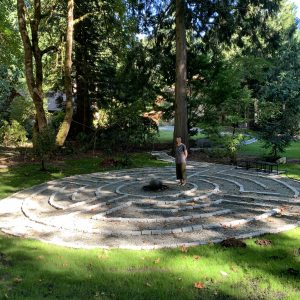 There may be moments of presence. Moments which don’t precede the future or follow the past. There may be moments of peace. A different way of knowing is possible – a greater trust and flow. There may be a fullness of being, a heartfulness. And then we find ourselves back in the confines of time. The drama of becoming with its ten thousand joys and ten thousand sorrows is so poignant and heartbreaking and worthy of love.
There may be moments of presence. Moments which don’t precede the future or follow the past. There may be moments of peace. A different way of knowing is possible – a greater trust and flow. There may be a fullness of being, a heartfulness. And then we find ourselves back in the confines of time. The drama of becoming with its ten thousand joys and ten thousand sorrows is so poignant and heartbreaking and worthy of love.
As we bring this practice to a close we can open our heart minds to all beings – creaturely beings not so very different from ourselves. We can wish for their well-being. May all beings be safe. May all beings be cared for and nourished. May all beings know what it is to give and receive compassion.

